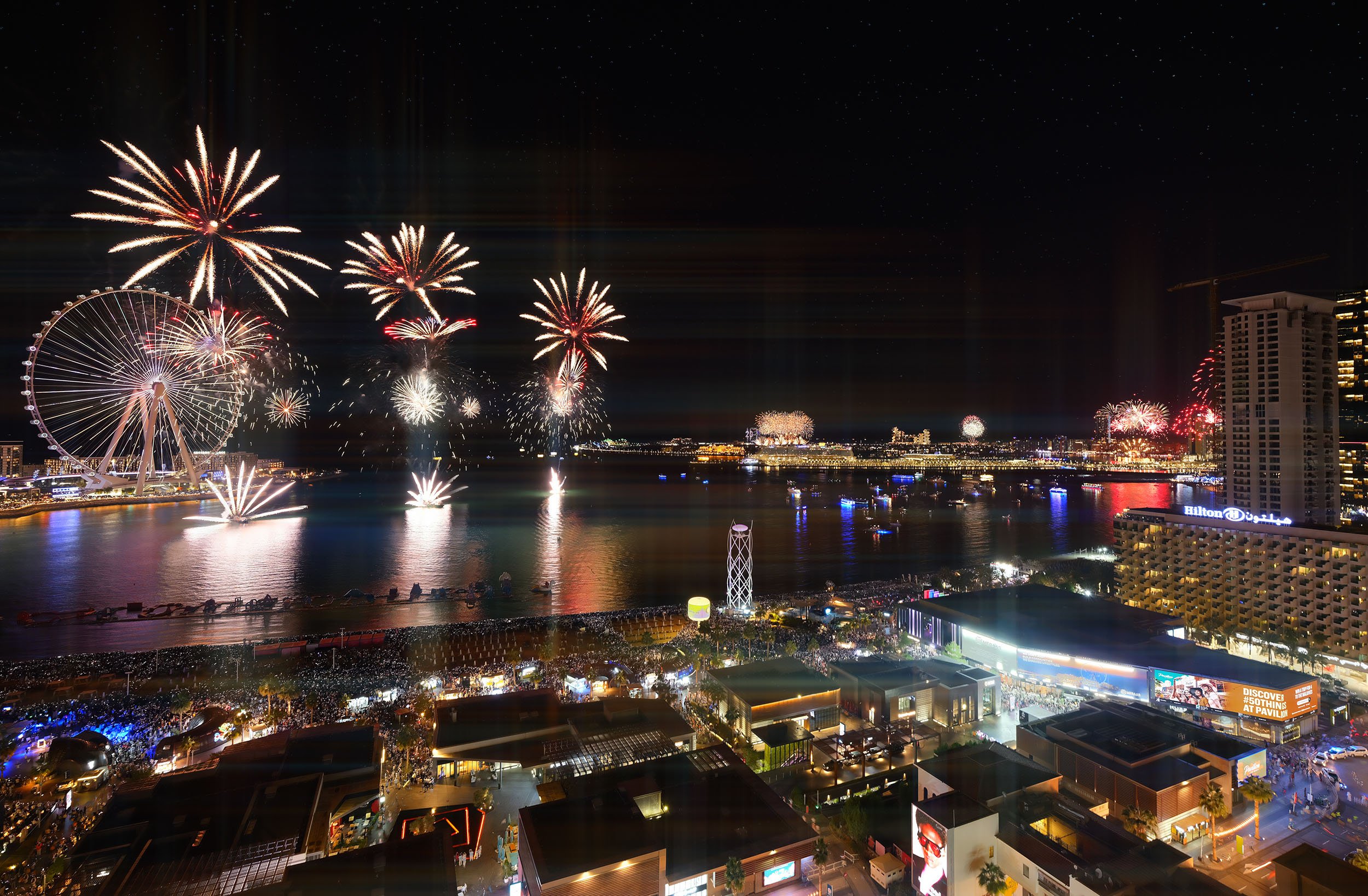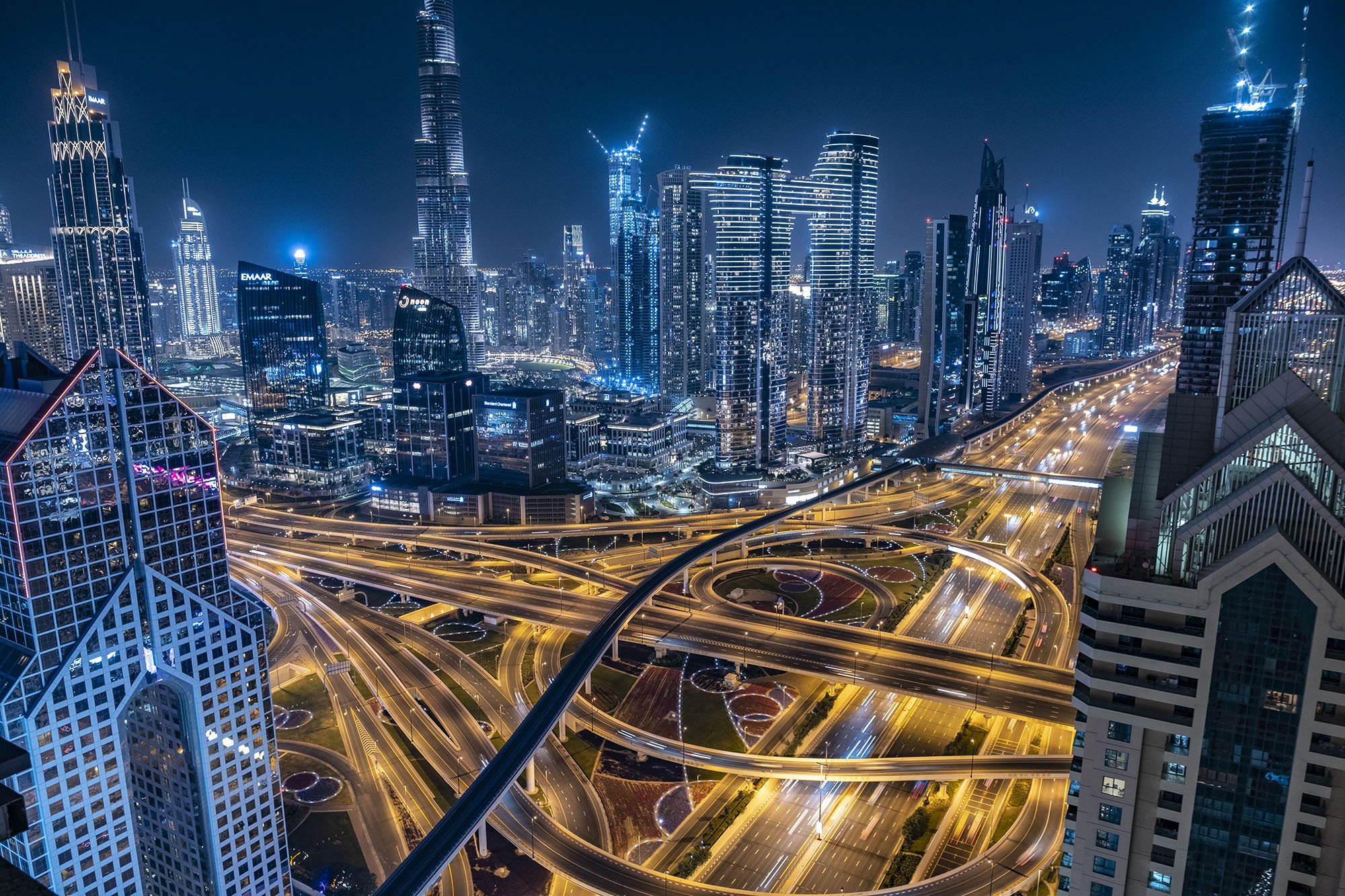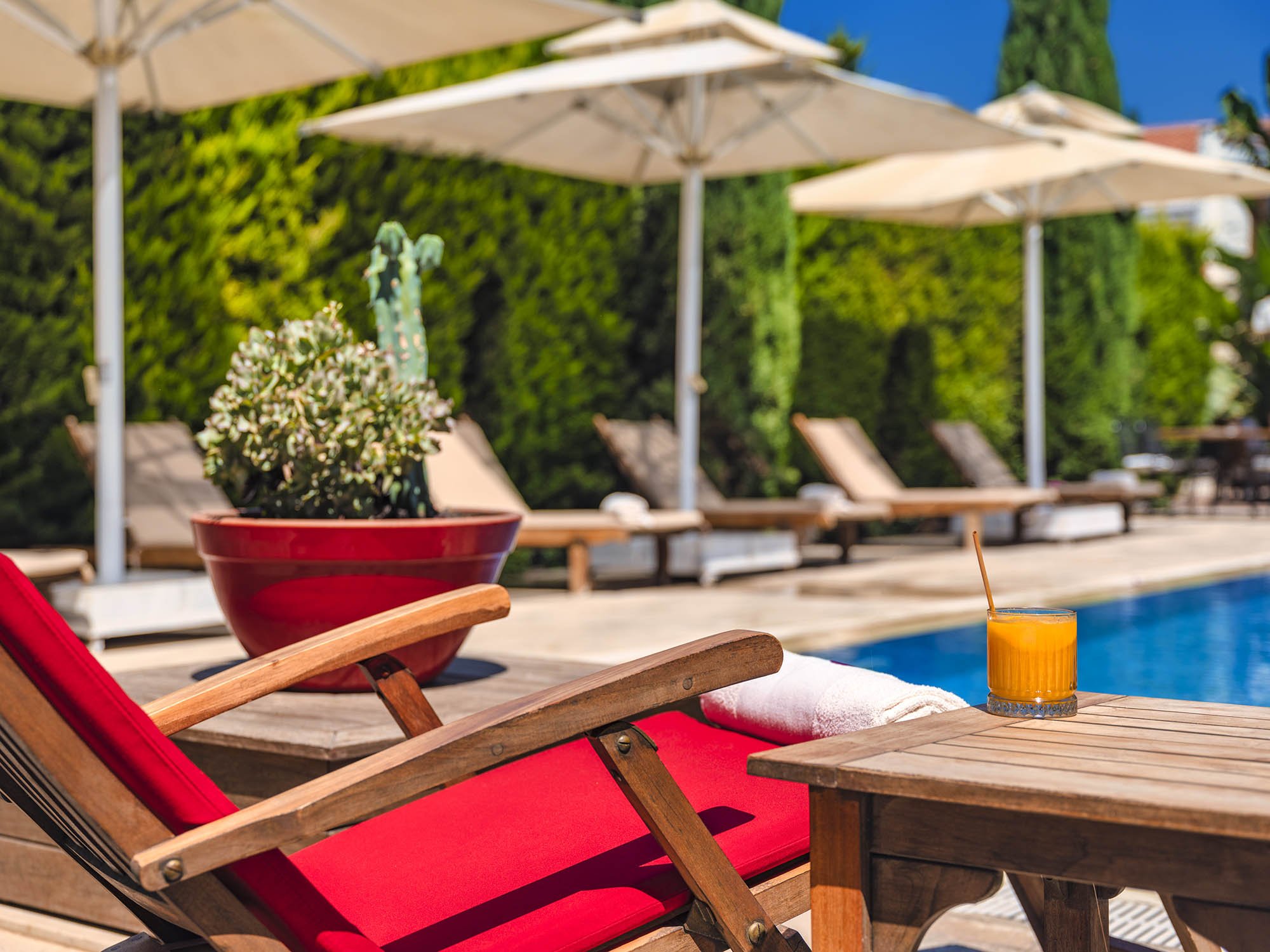Photography exhibitions. Legendary, world-renowned photographers. Industry experts. Presentations. Film screenings. Workshops. Book signings. Focus groups. Competitions. Latest camera gear & Trade show. Xposure International Photography Festival in Sharjah, UAE is unlike any other and if you care about photography even a tiny bit, you can’t afford to miss it.
Read MoreBLOG
Join me on a journey through the world of photography. My blog covers a range of topics including camera gear reviews, behind-the-scenes of commissioned projects, workshop recaps, and general thoughts on a variety of photography subjects. Follow along as I share my passion for the art and craft of photography.
Countdown to the New Year: Capturing Dubai's Magic in Time-Lapse
one camera, one balcony
New Year’s eve at THE WALK at JBR in Dubai in 90 seconds
for someone like me…
…nothing compares to the thrill of making a time-lapse video. It is genuinely magical and a trick that never fails to impress is the ability to condense hours or even days of action into a few brief seconds.
I got the chance to capture a time-lapse video on New Year's Eve from the balcony of a private flat at the Jumeirah Beach Residence in Dubai. The location was ideal, offering a breathtaking view of "The Walk" at JBR, "Ain Dubai" — the largest ferris wheel in the world — on Bluewaters Island, Dubai Harbour Cruise Terminal, and the always spectacular The Palm, with the two Atlantis hotels in the distance. At night, the whole scene looks like a giant, shiny treasure trove full of gold!
To capture a variety of focal lengths and viewpoints, I decided to take the Fujifilm GFX50s camera along with the GF 20-35, GF 32-64, and GF 45-100 lenses. The RRS's Multi-Clamp was used to secure the camera to the balcony's balustrade (amazing piece of gear btw). The RRS Modular L-Plate was attached to the camera, and it was mounted on top of the lightweight yet sturdy RRS BH-30 ballhead. I wanted a quick and simple procedure with little editing, so I decided to shoot in JPEG mode with the GFX’s built-in "Provia" film simulation. I simply wasn't in the mood to fiddle around with RAW files.
The actual shoot lasted for almost 2.5 hours, with the camera set to take a picture every 2 to 5 seconds. Because of this, I was able to record a variety of motion and activity as the evening progressed towards the midnight, and the masses of people below celebrated the beginning of the new year. Fireworks were great, but it was the drone show that I found particularly engaging.
I spent a day editing the finished time-lapse video after the shoot. As usual, I edited the film in Adobe Premiere. I changed the flow and speed of certain shots to produce the mood I was looking for.
Overall, the process of filming and producing this time-lapse video was enjoyable and painless. Provia film simulation produced warm, rich tones that enhanced the luxurious skyline of Dubai's golden cityscape. Seeing the finished product and knowing that I was able to record such a cool moment in time always gives me a rush. And that was my New Year's Eve time-lapse movie-making experience at the Jumeirah Beach Residence.
Hope you liked this blog, and the time-lapse film. To keep updated with my work and new blogs, please subscribe to my mailing list below. Wishing you a happy and healthy New Year 2023!
Recap: Architectural Photography Workshop at the Etihad Museum in Dubai
IS SHOOTING ARCHITECTURE FUN?
With the right subject, the right gear and skills, shooting architecture can be rewarding!
On the 18th December in Dubai, 20 photography students gathered at the Etihad Museum in Dubai for an architecutral photography workshop led by an Dany Eid, my fellow Fujifilm X-Photographer and myself. The workshop was organized by Fujifilm Middle East who provided a range of GFX cameras and GF lenses for the students. For many, this was their first experience with the medium format cameras.
As they arrived, the students were greeted by the stunning architecture of the museum, which features a sleek and modern design with clean lines and expansive windows. The group spent the first part of the workshop exploring the iconic building, both inside and out, taking advantage of the diverse range of photo opportunities that this unconventionally designed museum offered.
Inside, the students were able to photograph the impressive entrance lobby featuring a double-height atrium with its slanted, towering columns, imposing interior elements and sweeping curves.
Outside, the students had the chance to photograph the museum's distinct looking roof inspired by a folded sheet of paper and its surroundings, including its landscaped gardens and the bustling cityscape of Dubai in the background. They were able to experiment with different angles, lighting, and compositions to capture the beauty of the museum in their own unique way. Dany and I guided them each step, answering their questions, helping them find the most interesting angles and assisted them with the equipment and camera settings.
After the photo shoot, the group retreated to the classroom in the basement of Etihad Museum for a lesson on basic image post-processing techniques. We covered topics such as adjusting exposure, color correction, perspective correction, retouching, and demonstrated how to use various software tools to achieve the desired results.
The students were eager to learn and put their newfound skills to the test, practicing on their own photographs from the workshop. They were able to see firsthand how post-processing could enhance the overall look and feel of their images, and learned how to use these techniques to better communicate their vision as photographers.
Overall, it was a productive and informative day for the photography students, who left the workshop with a deeper understanding of both the technical and creative aspects of photography. The Etihad Museum provided a beautiful and inspiring setting for the workshop, and the students were able to take advantage of all that it had to offer to create some truly striking photographs.
Here’s my selection of the most interesting shots of the Etihad Museum I took during the 3 hour workshop
If you’re interested in attending one of my workshops, please subscribe to my mailing list to keep updated with my calendar of activities and don’t forget to say hi in the comment section!
From Snooze to Wow: How Time-Lapse Transforms the Ordinary into the Extraordinary
there are many REASONS
why time-lapses look better than regular video and this difference is particularly apparent at night, in the city. Let me explain why.
DEFINITIONS AND BENEFITS OF TIME-LAPSE CINEMATOGRAPHY
There are several reasons why a time-lapse video of a city at night deals a heavier punch than a standard video of the same subject. One of the key explanations is the fact that a time-lapse can capture a longer period of time in a compressed format, which can produce a sense of movement and change that is not as obvious in a standard video.
A time-lapse allows a larger range of motion and activity, including shifting traffic patterns, people moving through the streets, and changing illumination of buildings and landmarks. For the viewer, this may result in a more varied, dynamic and compelling visual experience that is difficult to capture and replicate with a video camera.
Time-lapses taken at night often outperform traditional videos because they can catch how the light changes throughout the day. A regular video clip will often have consistent illumination from start to finish. As dusk approaches and city lights come on, the illumination will change in a time-lapse, and that is one of the reasons why time-lapses rarely fail to impress.
but that’s just half of it!
Wider apertures and longer exposure periods are frequently used to capture time-lapses. This makes it possible to capture more light, which produces brighter photographs. Nighttime time-lapses of the city also appear more vivid since they frequently contain a broader variety of light sources. Last but not least, time-lapses are captured as a series of high-resolution, 16-bit RAW still photographs with a superior dynamic range and little noise. As a result, the artists enjoy the advantages of creative freedom. Their time-lapses suffer very little loss in image quality when using post-processing techniques.
In conclusion, time-lapse films have the ability to render the mundane world around us with crystal clarity, as a spectacle of dancing, vibrant lights. Time-lapses are exciting. Regular video on the other hand? Not so much.
Here’s a comparison of two still frames. On the left side is a frame extracted from a time-lapse sequence. On the right, a frame from a regular video. What is instantly apparent is how much brighter the time-lapse image appears. There are no black zones in the image where you can’t make out the detail. The colours are punchy, vivid and varied across the frame. Every type of light source has a distinct quality and tone. Cars have lovely motion streaks. The whole time-lapse scene appears alive, compelling and inviting.
The frame on the right side was extracted from regular video. It appears, well, regular. It’s mostly dark and quite dull. Video lacks the dynamic range to resolve the details in the dark areas of the image. There’s a very little variety when it comes to colours. The image is mostly yellow. There’s no real sense of motion or life. It’s kind of forgettable.
The difference between the two ways of shooting and featuring a scene is not subtle at all. The video footage captured with Fujifilm X-T3 is nice, don’t get me wrong. But it’s not exciting or special. On the other hand, motion-controlled time-lapse shot with the Fujifilm GFX100 is lively scene, combining an explosion of colours and a choreographed dance of cars and construction cranes. Time-lapse and regular videos are two different worlds, galaxies apart.
Time-lapse film featuring vistas of Dubai, captured from the penthouse on the 42nd floor of ‘Avani Palm View Dubai’ hotel and residence.
I hope you found this blog post useful, even enlightening. Owing to the advent of digital photography, time-lapse cinematography is one of the most exciting, niche filming techniques to have emerged in the past 15 years. But we all know how fast the technology is moving forward. It’s only going to get better form this point onward.
Do leave your comment below and please subscribe to my monthly newsletter. I promise not to spam you! :)
THE SHOOT AT BEY EVI BOUTIQUE HOTEL IN TURKEY
Alaçati, THE HIDDEN gem by the aegean sea
Many are praising this charming little city by the sea. I went there to see why.
BRIEF HISTORY of Alaçati
Alaçati, unlike most of the towns in the area, doesn't have a long history. If you come to the city to find the signs of the past Emperors and conquests, of the kings and palaces, you will be disappointed. The wonderful old structures that are frequently associated with the area are not present here. Instead, you have a community with a calm, muted heritage that matches the atmosphere it so willingly provides.
Early in the 19th century is when Alaçati first appeared. Earthquakes on the neighboring island of Chios have ruined the homes and way of life of the Greek families occupying the area. A well-known Turkish family was also hiring workers to work on their vineyards and olive farms at the same time. They approached the Greek families in the area, who drained the swamp to create a community.
Alaçati was the name given to the worker's town, a traditional Greek village with stone buildings and cobblestone streets. The town developed into a significant commerce hub as the nearby vineyards provided good wine, and it kept expanding until after the Balkan war in 1914.
According to the terms of the Treaty of Lausanne, which was signed in 1923, Muslims who had fled Crete, Thrace, Macedonia, and the Dodecanese moved in Alatsata city in the Greeks' abandoned homes. The majority of these homes are still standing in Alaçati as tourist attractions.
WHO LIVES THERE?
Turkish wealthy and celebrities are increasingly flocking to Alaçati as a substitute for the Bodrum scene. Over the years, Bodrum has been extensively explored; Alaçati is another small, upscale resort. Less than 10,000 people call Alaçati home permanently, but during the height of the summer, that number can increase by a factor of ten. 90% of the population is Turkish in general. Although there are not many foreigners here yet, they are gradually beginning to become aware of it. High society from both Izmir and Istanbul is represented.
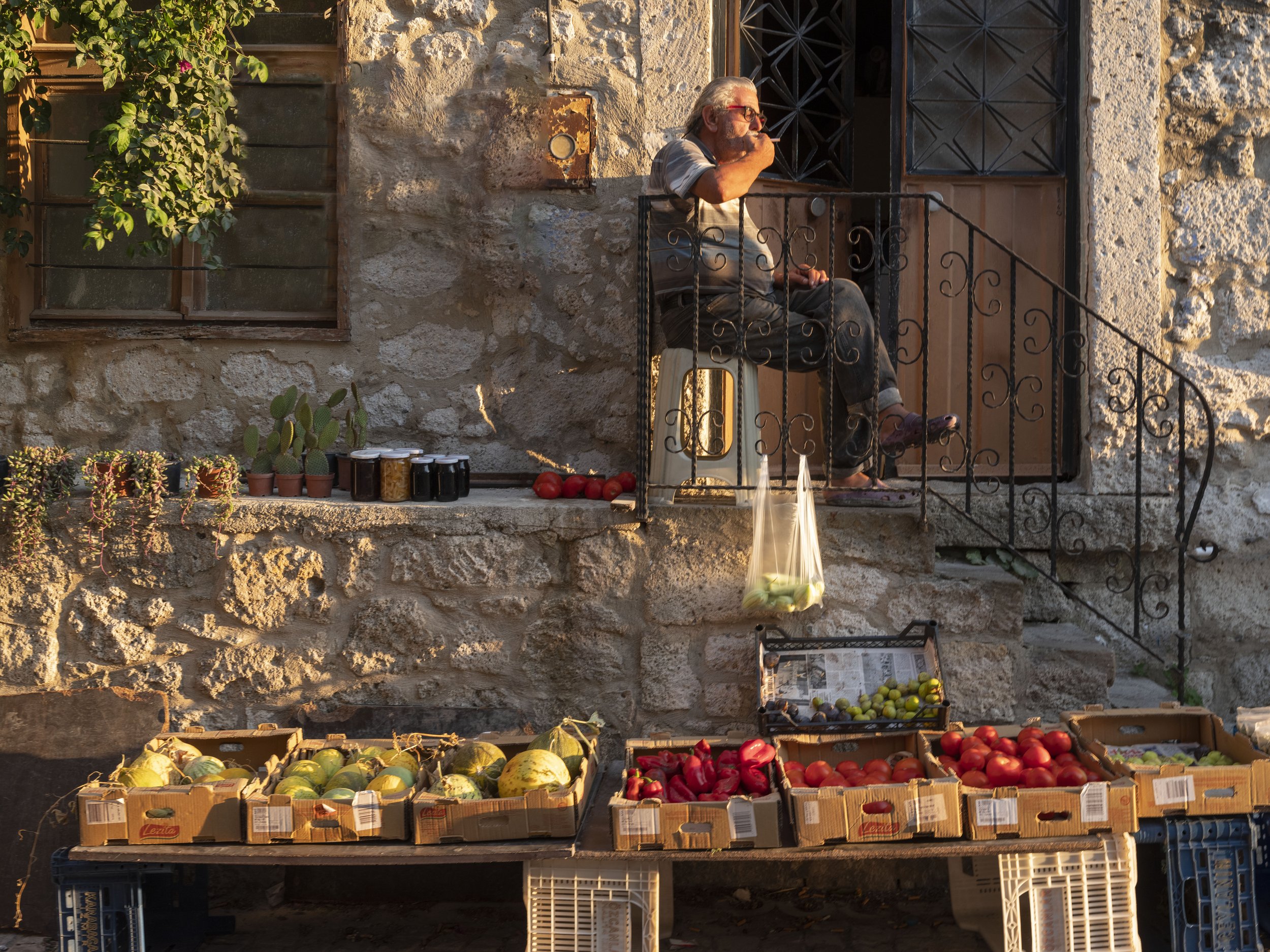
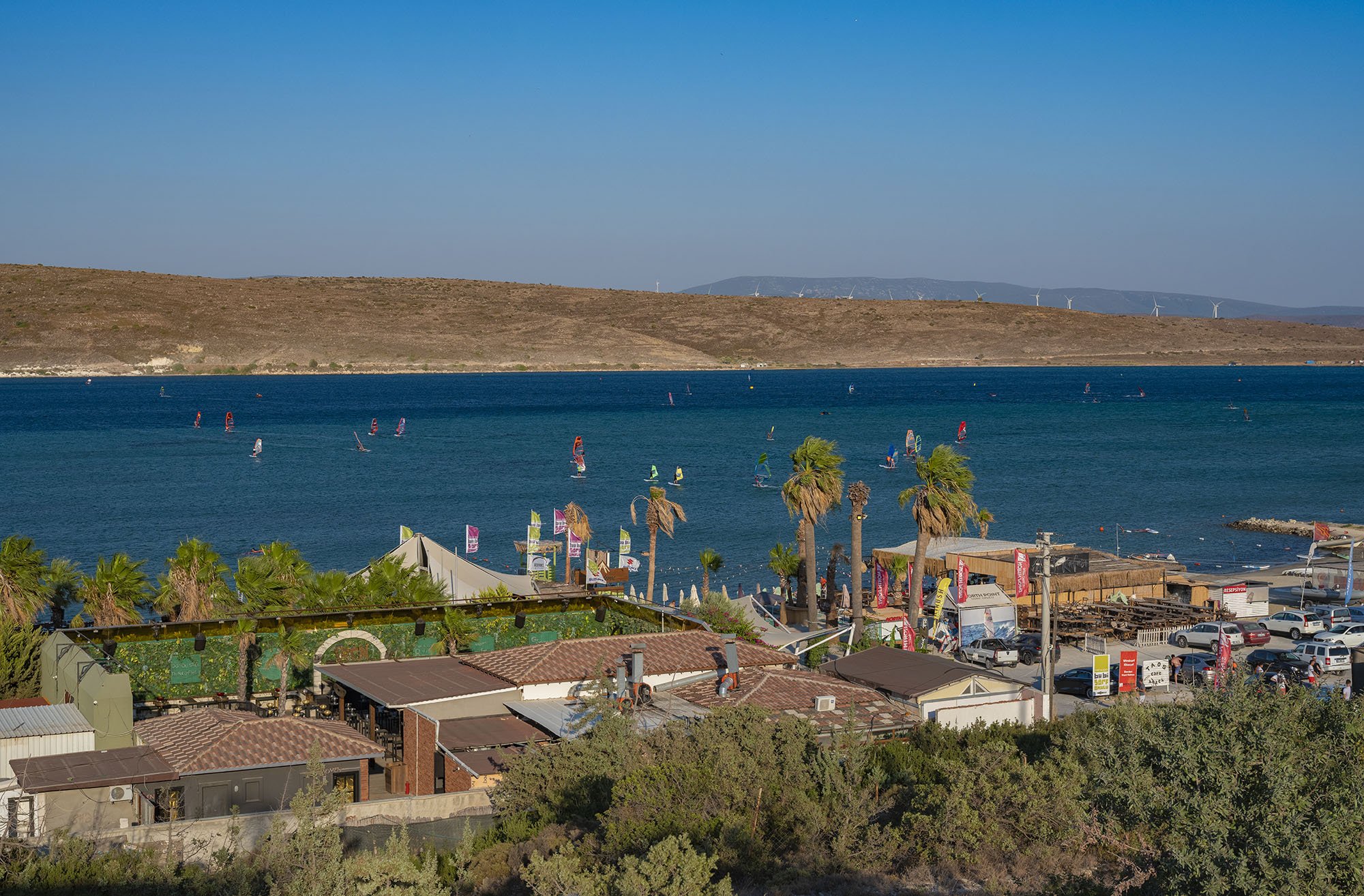
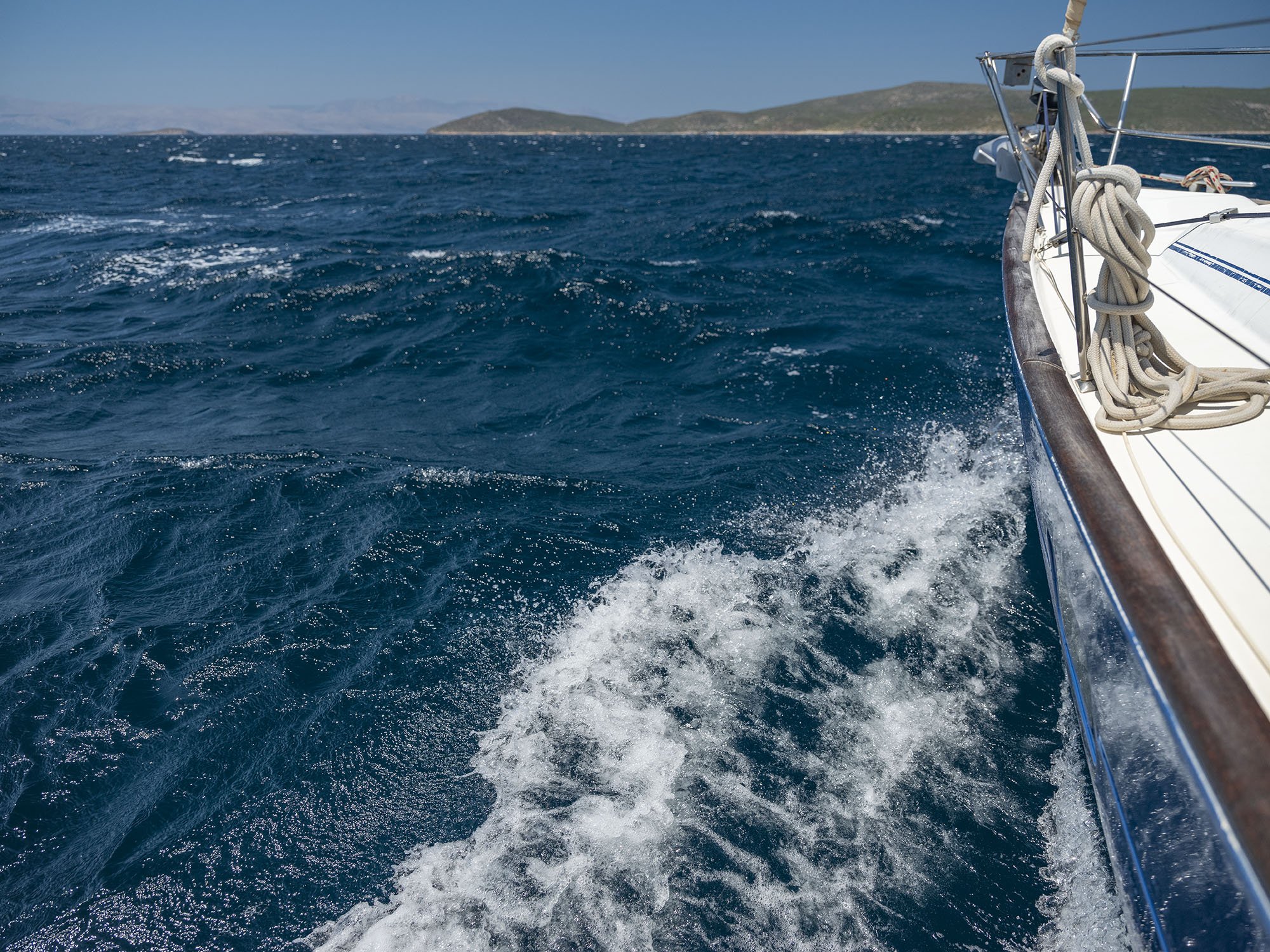
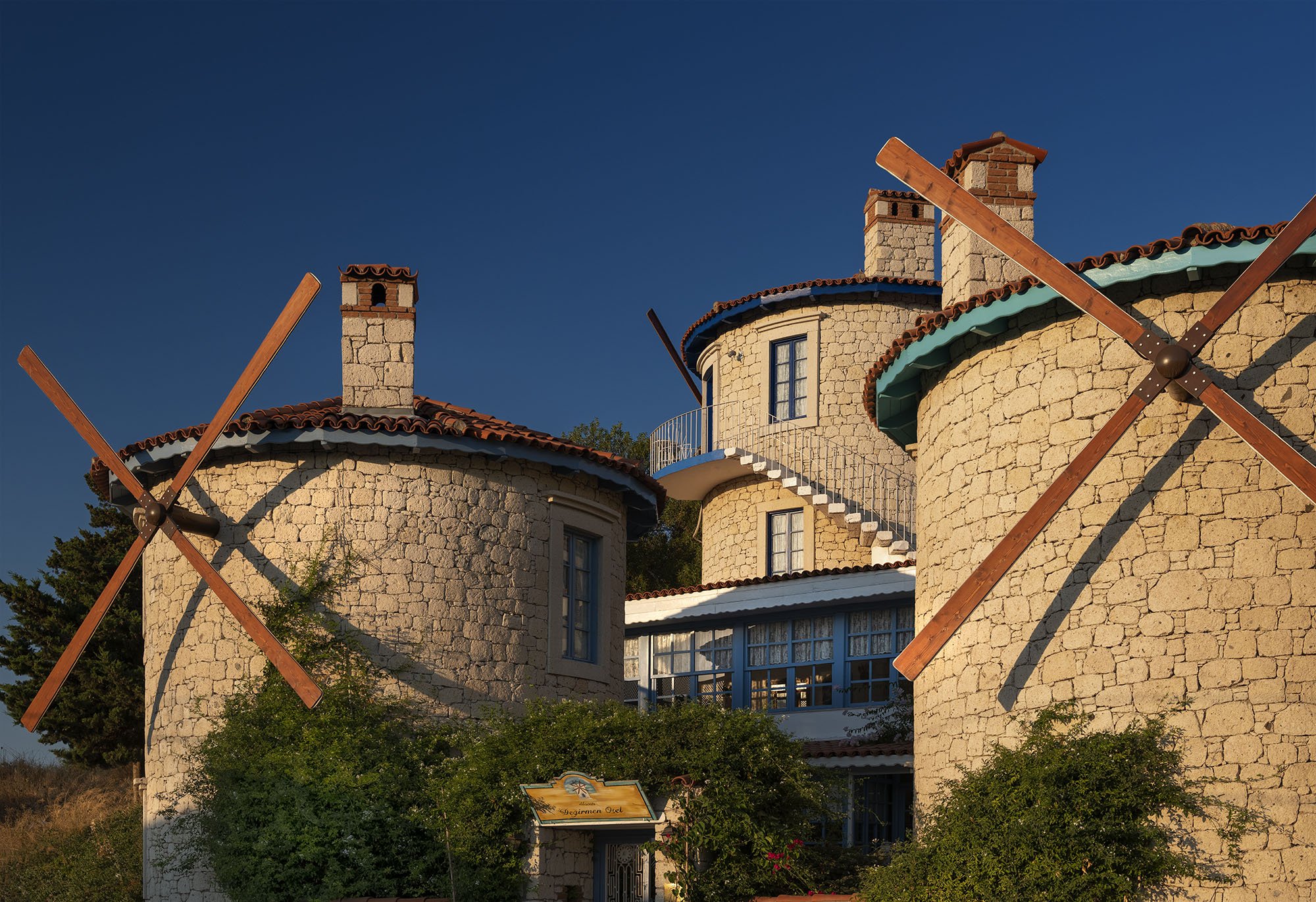
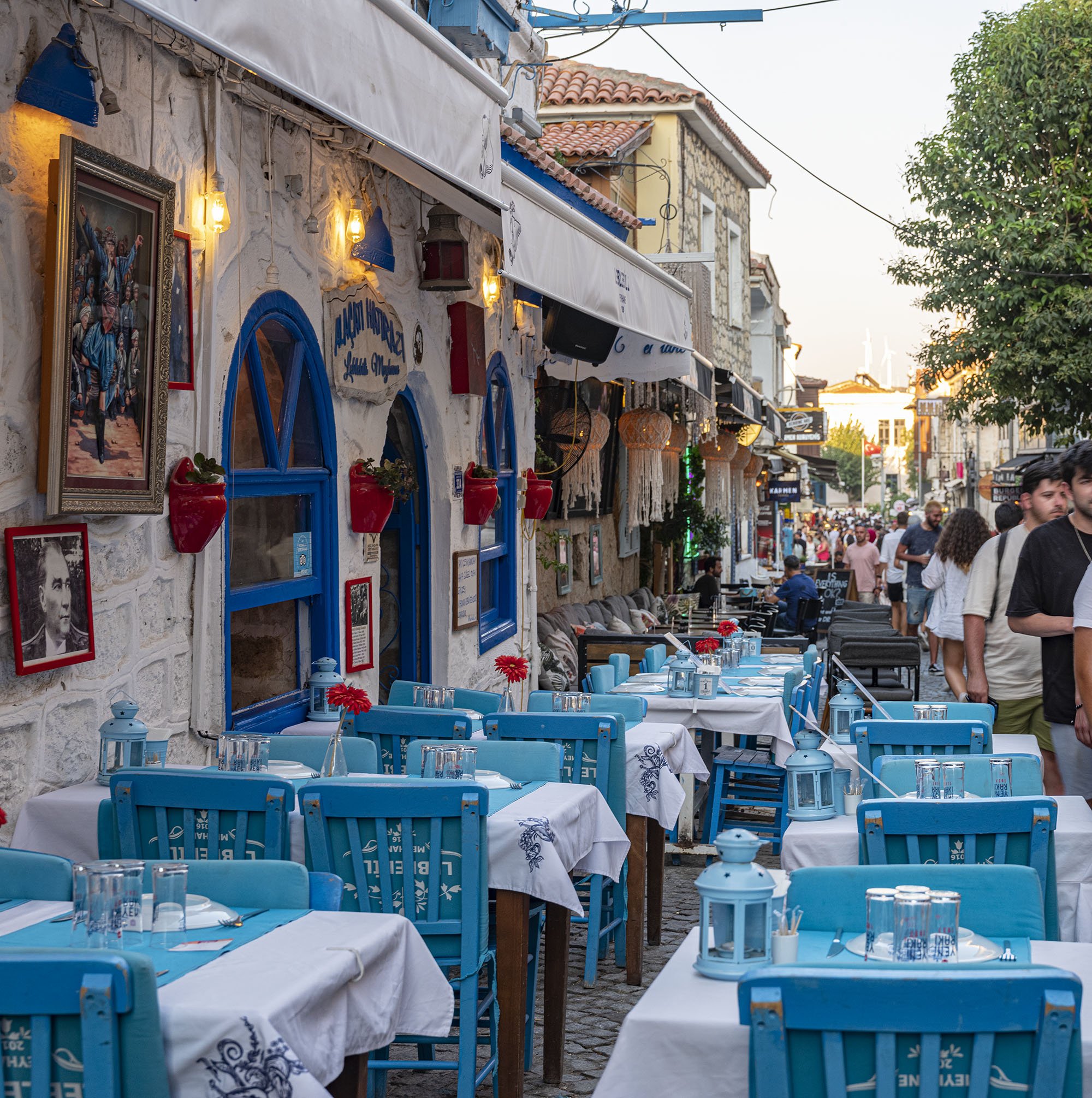
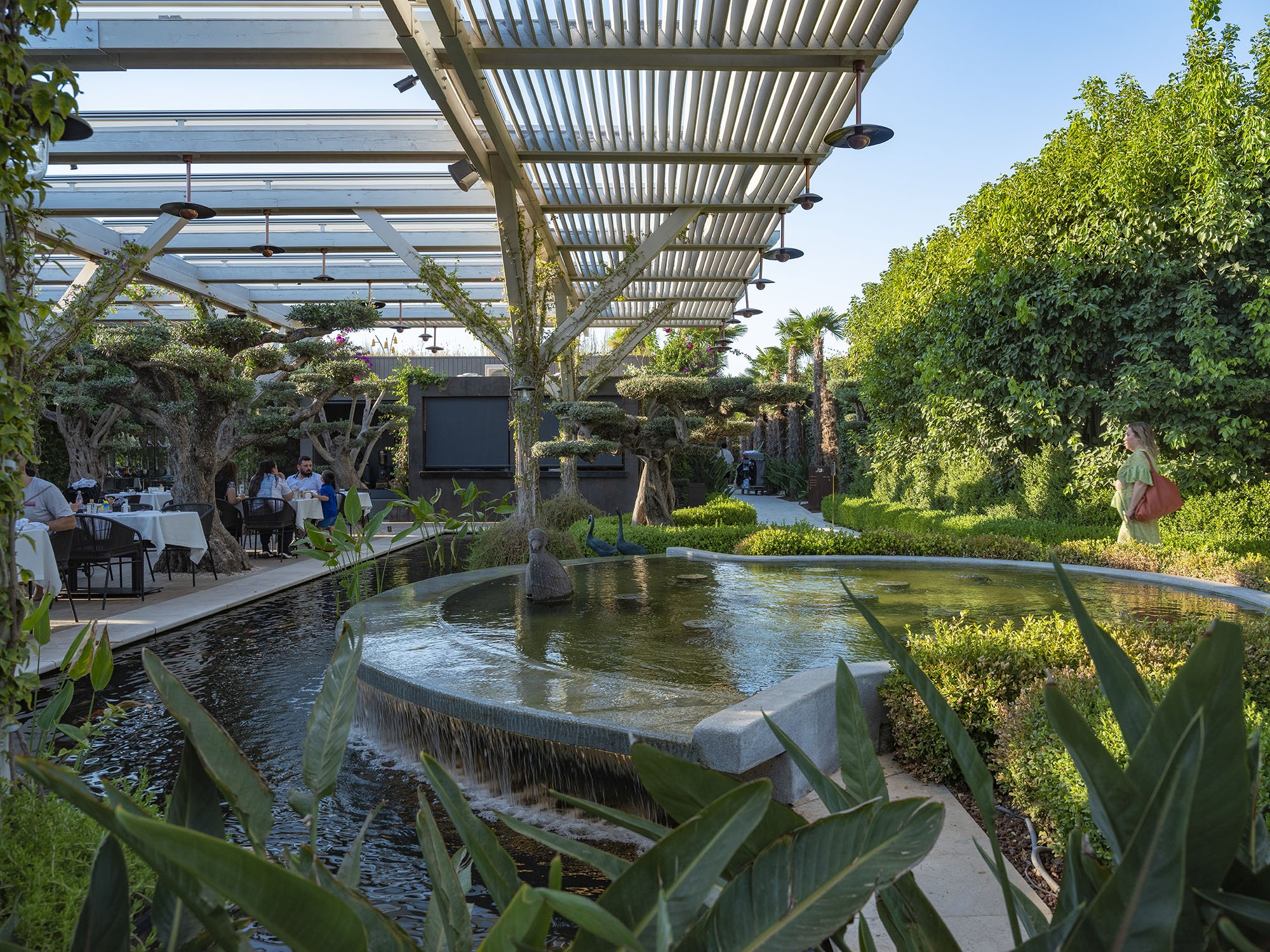
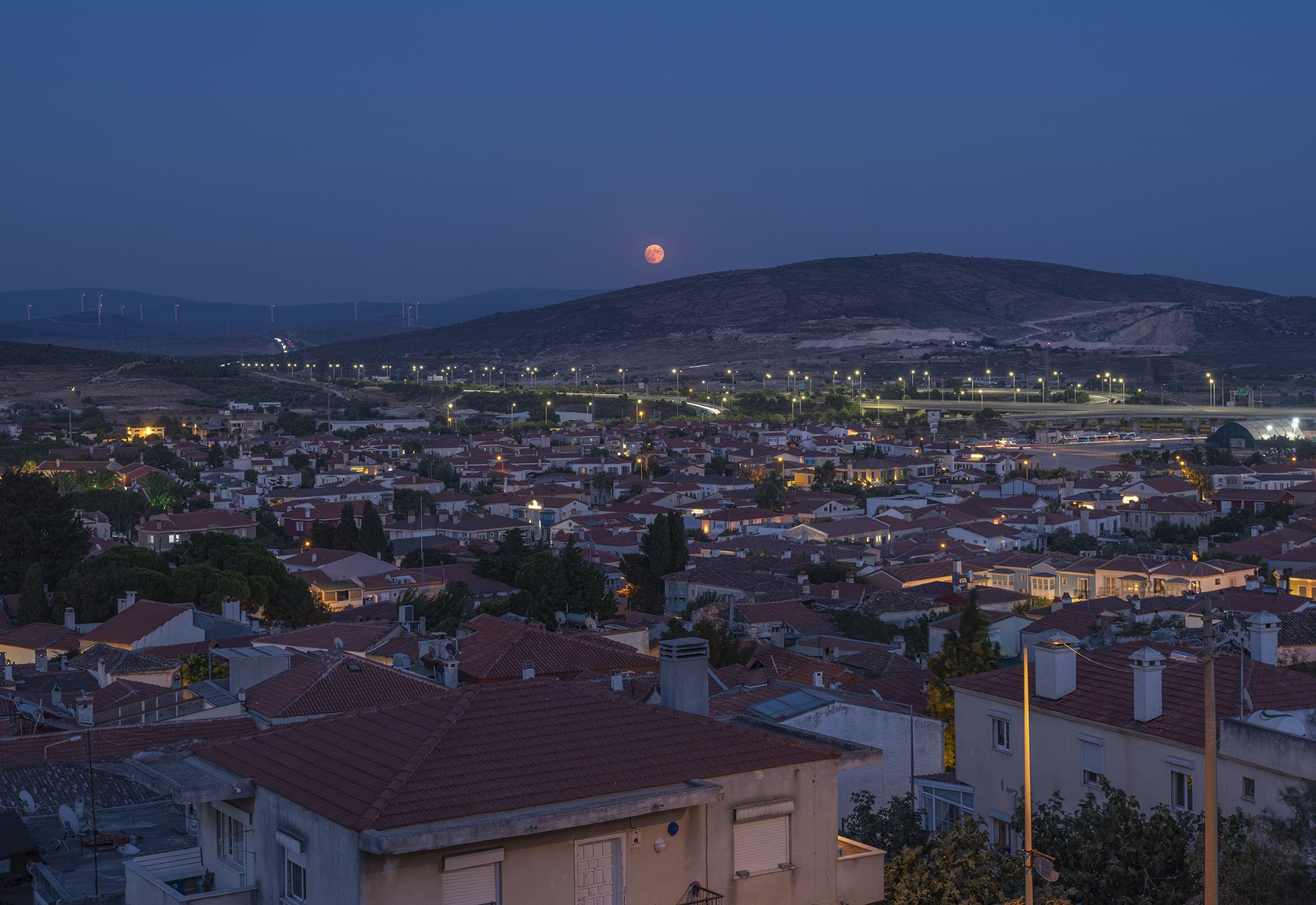
THE ARCHITECTURE
Stone homes with colored windows and pavement line the tiny lanes of Alaçati. Houses from the Ottoman era may be found in the city center of Alaçati; the ones that belonged to Ottoman Greeks can be identified by having an additional covered balcony area, known in Turkish as a cumba. Usually, lilac or light blue hues are used to paint enclosed cumba balconies. In 2005, the town was designated as a historical site, and the structures are now well-protected. The recently constructed homes make reference to the earlier architectural designs of the Ottoman homes in Alaçati's agora.
Today, most of the stone house have been converted into boutique hotels. Since these houses are quite old, the renovation and conversion process in Alaçati is a perpetual, visible everywhere, across the city.
BEY EVI boutique hotel; MY SUBJECT
One of the best hotels in the city is the BEY EVI (translated Gentleman’s House). I was requested to take photos of one of the hotel's smaller guest rooms where the renovations had just been finished. The chamber was actually rather large, and its interior design reflected its exteriors with real antique furnishings purchased from the region. I aimed to capture the peaceful atmosphere in the coastal city and the rustic warmth of this cottage. The hotel, in my opinion, effortlessly incorporated native Alaçati characteristics into the textures and materials used throughout. I hope I was able to capture the essence of this charming tiny hotel and pride it brings to its enthusiastic owners.
I used a Fujifilm GFX50s medium format camera with Fujinon GF 32-64mm lens.
Hope you enjoyed this blog. Please subscribe to my mailing list so you don’t miss my new post and to keep track of my upcoming photography and time-lapse cinematography workshop!

